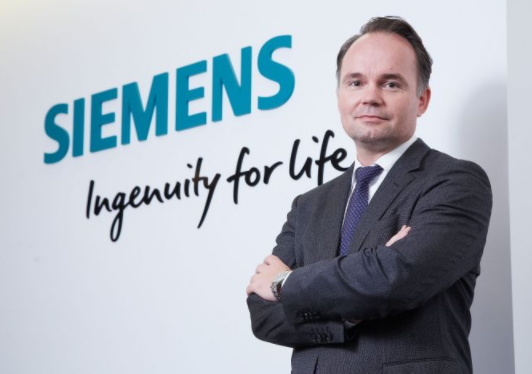TIno Hildebrand, general manager of Siemens Taiwan Software Industry, who took office last year, worked as an assistant to the automation department in Siemens in Taiwan in 2013. He is quite familiar with Taiwan's automation industry, and with a German background, his overall concept for Industry 4.0 Both have deep insights with technical applications.
In the past, the market generally believed that Taiwan's manufacturing industry was relatively backward in the development of Industry 4.0, and in some traditional industries it was not even possible to clarify the concept of Industry 4.0. But TIno is optimistic. He believes that the term smart manufacturing is not just empty talk in the eyes of many Taiwanese companies. Many manufacturers are very aware of the potential for smart manufacturing.

However, Taiwanese manufacturers have always been more conservative in their thinking, and it is harder to follow up immediately, so it seems that they will not progress much. Today's Taiwanese manufacturers are more likely to be in a “ready to go†stage for Industry 4.0. TIno is observing that most of them are still at the stage of discussion and planning, and the proportion of manufacturers actually putting into action may not be high.
However, it is still a good thing to hold an open mind. TIno is a suggestion. Nowadays, all the technologies needed for smart manufacturing are already Ready. There is no reason for the industry to realize the vision of smart manufacturing. From this point of view, perhaps the driving force behind Taiwan’s transformation of industry 4.0 is whether the industry is willing to take the first step.
However, upgrading Industry 4.0 is not without difficulty. At present, the Taiwanese industry has encountered the biggest problem. I am afraid that the scope of the entire Industry 4.0 is too wide. Even if it is dedicated, it does not know where to start. It is even more difficult for small and medium-sized enterprises with insufficient resources.
In this regard, Tino is an idea that the industry is not allowed to have a step in place. Even a large-scale enterprise with sufficient resources cannot introduce all the technologies of Industry 4.0 at once. This is the basic knowledge that the industry must have before transformation. Because of the huge structure, Tino believes that the industry's approach should be based on the pain points that the company wants to improve most. After obtaining specific benefits, it will move on to the next step and move toward the ultimate goal of the company.
In Taiwan's industrial environment, up to 70% are small and medium-sized enterprises, but it is also because of the lack of resources, it is easy for SMEs to dare to rashly transform or upgrade, and the progress of Taiwan seems to be a little behind. The resources that are lacking for SMEs must also be the focus of the current equipment suppliers.
In the case of Taiwan's Siemens, because of the lack of expert assistance within the SMEs, it will definitely face difficulties that have never been encountered in the past. Therefore, the consultant team within Taiwan's Siemens can help companies identify through various talent resources. The need to reduce the difficulty of system design during the import process, or provide technical support, so that the industry can make good use of the resources of existing suppliers to lower the import threshold.
Digitalization is overturning the current manufacturing environment. In the face of this wave, Tino also urges the industry's view of digital transformation to choose the right strategy for its own needs, not just "follow the trend." He further stated that the digital transformation can mainly distinguish between two categories. First, the industry is improving its own production environment, hoping to improve production quality or efficiency. The second is to introduce digitalization into the product, that is, from the simple sale of products in the past to the sale of services.
In terms of Taiwan's machinery industry, Taiwan's machinery industry is export-oriented, with a foreign sales ratio of more than 60%. Taiwan's OEM machinery industry is quite competitive internationally. It coincides with the government's active promotion of "5+2" in the past few years to fully sprint smart machines. It is a good market breakthrough to digitally upgrade mechanical equipment to "smart" and create more value and enhance competitiveness.
Taking Taiwan's machinery industry as an example, Tino suggested that OEMs can change the business model that may be saturated at this stage by introducing digitalization. For example, let the mechanical equipment network establish a cloud platform, so that the machinery industry can grasp the operating status of the machines exported to the world, provide the service of predictive maintenance in time, and avoid the customer to stop production due to equipment failure during the use. As for the client, Through the collection of production data, we can grasp the production progress and make the production line run more transparent.
In the past, the export of machinery and equipment by the industry usually took the mode of selling a single product. However, as the demand for customization increased, the operators must grasp the demands of the client to create product differentiation and enhance market competitiveness. Tino suggested that if Taiwanese machinery manufacturers continue to maintain a high degree of competitiveness, they may wish to develop in the direction of digitalization, so that the traditional machinery industry will continue to shine in the market after the third trillion yuan industry in Taiwan.
Easy Electronic Technology Co.,Ltd , https://www.pcelectronicgroup.com
![<?echo $_SERVER['SERVER_NAME'];?>](/template/twentyseventeen/skin/images/header.jpg)